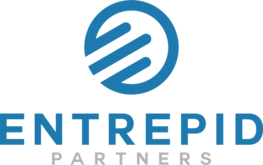Asking effective and open-ended questions
Previously, we discussed why it’s so important to focus on the customer during the qualification phase and how it’s vital to find a sales framework that lets you ask the right questions. We developed the CONSULT method for early-stage startups qualifying potential customers.
Let’s zero in on each of the elements of the CONSULT method and look at examples of what elegant, open-ended questions for each might look like.
C: Current process
Understand what your prospect’s current process and workflow are as they relate to what your solution offers.
- How are you currently doing [X]?
- Can you please tell me about your current process?
- What is working well with this process?
O: Ongoing challenges and pain
Deter mine what challenges the prospect is experiencing with their current process or product. Remember, no pain = no sale. Once you identify the challenges, you can start to shift the conversation to how your product or service can help solve them.
- What are some of the challenges with your current process or way of doing things?
- If you could improve certain areas of the process what would you do?
- Are these challenges business-critical?
N: Needs and product requirements
Once you’ve identified the prospect’s pain points, you’ll want to understand what is important to them when they evaluate solutions. Don’t be afraid to ask!
- What is important to you in a solution?
- What criteria do you use to evaluate solutions?
- What would the perfect solution look like?
S: Success criteria
The goal here is to understand what success looks like to the customer after adding a new solution. Think about it from the buyer’s perspective: What is the goal for them? Is it a quick implementation? Working with an existing tech stack? Creating a certain report? Achieving a certain metric?
- If you fast-forward to after you have implemented a solution, what does success look like?
- What is the end goal for this project?
- What metrics will you review to determine if a product will work for you?
U: Understanding of the evaluation process
How will the customer evaluate your solution and where will the money for it come from?
- Tell me about the evaluation process that you will run for [X].
- How does your organization or department buy software?
- Has your organization bought [X] solutions before?
L: Leadership involved in making the decision
Find out which people are involved in making the decision to buy and implement a product or solution.
- Who will be involved in this evaluation?
- Are there any other people we should include in ongoing discussions who will be involved in the process?
- Who else will be using the product?
T: Timelines and priority
The goal here is to determine by when the customer wants to make the decision and how much of a priority it is for the business. Remember: interest does not imply urgency.
- When would you like to make a decision by?
- Is this a priority for the organization? When would you like to be live with the solution?
- Why is this a priority for the business now?
